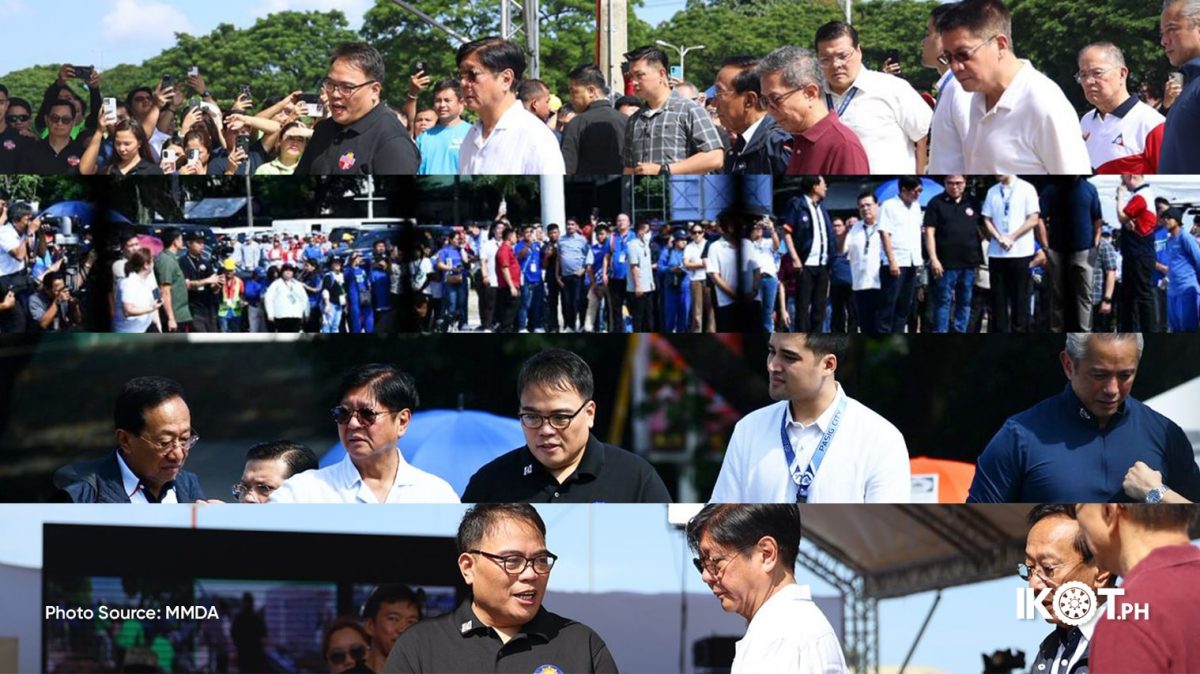President Ferdinand Marcos Jr. led the launching of the Metropolitan Manila Development Authority (MMDA)’s Bayanihan sa Estero Program with a goal to double up its efforts on cleaning up and maintaining drainage infrastructures in Metro Manila as many of waterways are becoming heavily silted and clogged with solid waste contributing to recurrent localized flooding during rainy season.
Drainage system in the metropolis consists of 273 identified rivers, tributaries, esteros, and open canals which serve as primary channels for conveying stormwater and flood runoff across the region.
Embodying the true spirit of bayanihan, the program is carried out in close coordination with key stakeholders including city and barangay local government units, concerned national government agencies, and civil society organizations.
MMDA Chairman Atty. Don Artes said that the Bayanihan sa Estero Program is the MMDA’s response to President Marcos Jr.’s socioeconomic agenda on strengthening disaster resilience.
Artes recognizes the significance of clearing waterways to cushion the impact of floods brought about by unusual heavy rains, said to be an effect of climate change and which the President described as “new normal”.
“Heavy silts and different kinds of trash clogging the waterways are products of the worsening effects of the public’s lack of discipline in garbage disposal that must be immediately addressed.”
The MMDA chief said that heavy silts and different kinds of trash clogging the waterways are products of the worsening effects of the public’s lack of discipline in garbage disposal that must be immediately addressed.
“Our initiatives play a vital role in flood mitigation. We need to intensify these efforts of declogging our drainage laterals, dredging of open waterways, desilting of drainage mains, and removal of accumulated solid waste with the help of our stakeholders,” he emphasized.
“The Bayanihan sa Estero Program symbolizes collective action especially during the rainy season and storms.”
“The Bayanihan sa Estero Program symbolizes collective action especially during rainy season and storms. It is a reminder of the bayanihan spirit—from esteros to barangays, from government to houses—that if we are united, real change is attainable,” the MMDA head added.
He likewise said that the MMDA has new equipment to desilt esteros that is owned and administered by the agency, itself and not contracted.
MULTI-SECTORAL APPROACH
Under the program, the MMDA serves as lead coordinator and implementer of metro-wide estero cleanup. Concerned city/barangay serves as partner implementer for coordination and mobilization of manpower and resources.
Department of Environment and Natural Resources manages deployment of estero rangers to handle hands-on trash collection and coordination with MMDA on environmental safeguards. Department of Labor and Employment, meanwhile, provides additional manpower through their Tulong Panghanapbuhay sa Ating Disadvantaged/Displaced Workers (TUPAD) program as well as safeguarding of labor standards.
The Department of Public Works and Highways provides heavy equipment, dredging support, and engineering coordination while the Department of Education spearheads the dissemination of information and educational campaigns about proper waste management and importance of protecting creeks.
Department of the Interior and Local Government (DILG) mobilizes barangay volunteers and ensures local access and coordination.
Private partners including APO Fraternity and Lucio Tan Group provide additional resources such as clean-up tools.
23 ESTEROS PRIORITIZED
The program targets the completion of cleanup activities on 23 identified esteros that have been prioritized for immediate intervention due to significant siltation, heavy accumulation of solid waste, poor flow conditions, and their susceptibility to recurrent flooding. These areas were also selected on the basis of their impact on surrounding communities and proximity to flood-prone zones.
From the 23 priority esteros, extensive cleanup for 12 esteros have been completed, with a total of 881 cubic meters of garbage removed. Thirteen others are scheduled for clean-up with ongoing coordination with LGUs.
COMPLETED CLEANUP OPERATIONS:
1. Libjo Creek (Volume Dredged: 212 cu. m)
2. Balihatar Creek (Volume Dredged: 143 cu. m)
3. Las Piñas River (Volume Dredged: 38 cu. m)
4. Casili Creek (Volume Dredged: 54 cu. m)
5. Tanigue Creek (Volume Dredged: 75 cu. m)
6. Maligaya Creek (Volume Dredged: 36 cu. m)
7. Balingasa Creek (Volume Dredged: 92 cu. m)
8. Makiling Creek (Volume Dredged: 40 cu. m)
9. Estero de San Miguel (Volume Dredged: 80 cu. m)
10. Estero de Calubcob (Volume Dredged: 30 cu. m)
11. Estero de Tripa de Gallina (Manila) (Volume Dredged: 2 cu. m)
12. Estero de San Antonio Abad (Volume Dredged: 79 cu. m)
ONGOING COORDINATION:
13. Estero de Magdalena
14. Antipolo Canal
15. Estero de Tripa de Gallina (Pasay)
16. Calatagan Creek
17. Navotas River
18. Catmon-Sucol Creek
19. Tumana Creek
20. Buli Creek
21. Talayan Creek
22. Hagonoy Pumping Station (Retarding Pond)
23. Maya-Pinagsama Creek
Initial operations have already commenced with completion of cleanup and rehabilitation activities in all the 23 priority esteros targeted within the third quarter of the year.
Beyond the initial interventions, the MMDA will continually return to these sites for regular maintenance to ensure that waterways remain clear, functional and well-managed over time.
Remaining esteros from the total 273 waterways in NCR will also be monitored and scheduled for clean-up, reinforcing the agency’s fulfilment of its mandate and long-term commitment to improving urban waterway management.
BYPRODUCTS OF INTEGRATED SOLID WASTE MANAGEMENT FACILITIES SHOWCASED
Showcased during the cleanup operations are byproducts of waste segregation and processing facilities that convert waste into valuable byproducts.
These include: eco-bricks, eco-hollow blocks, and eco-concrete barriers made from collected recyclable materials and plastics processed through the Solid Waste Granulator (SWG), Brick Making Facility (BMF), and Plastic Processing Equipment (PPE) in Vitas Pumping station.
Also, lily pots and charcoal briquettes made from water hyacinths processed in water hyacinth processing facility in Tapayan pumping station were also displayed during the activity.
Under the Metro Manila Flood Management Project (MMFMP) Phase 1, various facilities and equipment with innovative technologies were installed along waterways and pumping stations to help ensure that accumulated wastes are collected, transported, and processed/disposed of efficiently, and reduce the waste transported to sanitary landfills.



